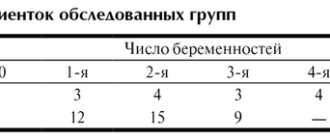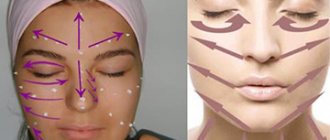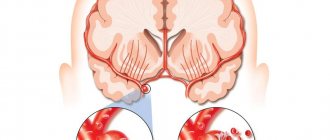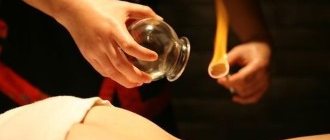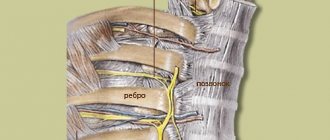One of the methods that a speech therapist uses in his work is probe massage. This procedure applies to:
- stimulation of speech motor skills;
- improving the muscle tone of the articulatory apparatus.
Special probes are used for massage. With the help of these tools, the speech therapist influences the labial muscles and tongue, cheeks, and soft palate by sliding, pressing, moving and rubbing. The described manipulations with individual areas of the articulatory apparatus lead to its improvement and restoration of proper functioning. But in addition to normalizing sound pronunciation, probe massage has a beneficial effect on the nervous system, which additionally stimulates the development of children's speech.
As before any medical procedure, probe massage requires a thorough speech therapy diagnosis, during which the facial and masticatory muscles that are part of the articulatory system, as well as the lips, cheeks, tongue and soft palate are examined. Based on the results of the examination, the location and extent of the lesion is determined, and the time required for treatment is specified. Preliminary diagnostics is also aimed at determining the most effective massage technique for taking into account all the characteristics of the patient and his speech impediment. The time it will take to eliminate deficiencies is influenced by the following factors:
- degree of severity of the defect;
- patient's age;
- his individual characteristics.
It should be noted that a neurologist (children's neurologist) refers to massage courses after a preliminary examination of the patient. And the speech therapist chooses a specific massage technique and its intensity.
What are speech therapy probes?
Probe massage, as the name suggests, is carried out using special metal instruments. They should not be confused with Rau probes, which are used to produce sounds.
The author of the massage complex is E.V. Novikova, who received a patent for her development in 2000.
The set of probes includes 8 main and 4 additional probes with specific functionality. Various types of probe effects on the affected areas stimulate sensitivity and improve connections between peripheral organs and the cerebral cortex.
The tools are used to work with articulatory organs and the forearm. Massage areas are selected individually, depending on what the patient complains about. With the help of probes, you can relax the facial muscles and increase their tone, get rid of spasms. And the impact on the muscles of the leading hand develops motor skills and helps in the formation of handwriting.
Since 2000, technology has not stood still, and some specialists have made their own improvements. For example, famous speech therapists T.A. Vorobyov and O.I. Krupenchuk developed their own version of 9 instruments.
VIVO CLINIC specialists use massage speech therapy probes from all authors in their work, selecting individual sets of tools based on the goals and objectives of correction.
Modern methods of stuttering correction
The formation of a modern integrated approach to the correction of stuttering was preceded by the development of various methods and ways to overcome this disease.
Despite the centuries-long history of studying and treating speech disorders, stuttering is one of the diseases whose mechanisms have not yet been fully studied and explained. It should be noted that the mechanisms of stuttering are heterogeneous. In some cases stuttering is interpreted as a complex neurotic disorder, which is the result of a “collision” of nervous processes in the cerebral cortex, a violation of cortical-subcortical interaction, a disorder of the single auto-regulated tempo of speech movements (voice, breathing, articulation).
In other cases - as a complex neurotic disorder, which was the result of a fixed reflex of incorrect speech, which initially arose as a result of speech difficulties of various origins.
Thirdly, as a complex, predominantly functional speech disorder that appeared as a result of general and speech dysontogenesis and disharmonious personality development.
Fourthly, the mechanism of stuttering can be explained by organic lesions of the central nervous system. Methods for overcoming stuttering were developed by the authors based on their different understanding of this speech disorder. The numerous methodological approaches to overcoming this pathology are explained by the complexity of its structural manifestations and the insufficient level of knowledge about its nature. The need for complex interventions in the correction of stuttering was pointed out by I.A. Sikorsky (1889) and I.K. Khmelevsky (1897). They expressed views that have not lost their significance today. So, I.A. Sikorsky included speech gymnastics, psychotherapeutic, pharmaceutical treatment and motor exercises in the treatment of stuttering.
Based on the teachings of domestic physiologists I.M. Sechenov and I.P. Pavlov and their followers, scientists and practitioners have defined a modern comprehensive approach to overcoming stuttering. L.Z. Andronova (1993), N.M. Assatiani (1980), V.A. Gilyarovsky (1932), K.M. Danilov and I.V. Cherepanov (1970), V.S. Kochergina (1960), V.A. Kurshev (1973), employees of the laboratory of the Research Institute of Defectology under the direction of R.E. Levina (1963), S.S. Lyapidevsky (1960, 1963), L.Ya. Missoulin (1988), Y.B. Nekrasova (1984), V.I. Seliverstov (2000), M.V. Serebrovskaya (1925), N.P. Tyapugin (1966), Yu.A. Florenskaya (1949), M.E. Khvattsev (1959), V.M. Shklovsky (1994), A.V. Yastrebova (1963) and others with their research contributed to the development of a therapeutic and pedagogical approach to overcoming stuttering. In the works of many authors there are instructions on some specific issues of eliminating stuttering (G.I. Angushev, 1974; S.Yu. Benilova, T.S. Reznichenko, 2001; T.G. Vizel, 1997; V.A. Kovshikov, 1976 ; Y.I. Kuzmin, 2000; V. Adamczyk, 1969; G. Andrews et al, 1982; S. Van Riper, 1982, etc.). In a number of foreign works we find interesting observations and recommendations regarding the correction of stuttering. Many clinical researchers come to the conclusion about the need for comprehensive comprehensive treatment of this speech defect, which includes speech therapy exercises, drug therapy, as well as targeted psychotherapeutic influence on the patient’s personality, helping him adapt to the conditions of the social environment (KP Bekker, M. Sovak, 1984; O.A. Bloodstein, 1995; M. Opslowsh et al., 1997; M. Seetan, 1962).
Scientific research based on experimental and clinical-psychological studies of people who stutter has made it possible to formulate valuable theoretical and practical principles and to determine the place of speech therapy and various therapeutic measures in a comprehensive treatment system. At present, there is no doubt about the advisability of a differentiated and individual approach to stutterers of different age categories, taking into account the complex structure and etiopathogenesis of speech disorders .
It should be noted that until now, researchers have expressed different and sometimes directly opposite points of view on this speech pathology. Most researchers and practitioners working on this problem are still of the opinion that it is necessary to comprehensively study and treat this speech disorder, and to select certain methods of complex therapy. In these conditions, there is a need to search for common conceptual foundations for the interaction of specialists and coordinate their activities.
In the rehabilitation of people who stutter, an integrated approach is currently used, since impaired speech fluency is associated with a number of reasons, both biological and socio-psychological.
Firstly, it is a combination of correctional pedagogical and therapeutic work, which is aimed at normalizing all aspects of speech, motor skills, mental processes, educating the personality of a stutterer and improving the health of the body as a whole. Secondly, an integrated approach includes a system of clearly demarcated, but coordinated means of influence by different specialists. This involves the joint work of a doctor, speech therapist, psychologist, rhythm specialist, functional diagnostics specialist, physiotherapist and social worker. Currently, the specialized literature presents both some methods of speech therapy work with people who stutter (covering only certain aspects of the problem that interests us), as well as a number of complex rehabilitation systems, the conceptual basis of which is to take into account the characteristics of the patient’s psychophysical development, the etiology, mechanisms and symptoms of the disorder, including speech disorders. , psychological, motor, age characteristics of this patient population.
According to L.I. Belyakova, E.A. Dyakova (1998); V.A. Kovshikova (1976); M.I. Lokhova, Yu.A. Fesenko (2000); V.M. Shklovsky (1994) and others, when developing rehabilitation measures, the nature of the primary damage to the nervous system in various forms of stuttering should be taken into account. In the neurotic form of stuttering, therapeutic interventions should be aimed at reducing the excitability of emotiogenic brain structures, which can be achieved through a combination of medications and various psychotherapeutic techniques (stress therapy, hypnosis, autogenic training). Speech therapy classes against this background are much more effective.
People who stutter with a neurosis-like form of speech defect require long-term correctional and pedagogical interventions that promote the development of regulatory functions of the brain (stimulation of attention, memory and other mental processes), and special drug treatment aimed at reducing the consequences of early organic brain damage. Speech therapy sessions for this group of stutterers should be regular over a considerable period of time. The complex of therapeutic and psychological effects necessarily includes methods aimed at rhythmizing movements.
Thus, according to the authors, in cases where the neural mechanisms of stuttering are associated with organo-functional damage to the motor structures of the brain, normalization in the functional speech system should occur through the development of new speech motor reflexes, while in neurotic stuttering treatment is aimed at restoration and strengthening of existing speech motor automatisms acquired in early speech ontogenesis. In connection with the tasks of diagnosis and pathogenetic substantiation of complex logotherapy V.M. Shklovsky (1994) proposed a classification of patients with stuttering, in which, along with the manifestation of speech pathology itself, the degree of disorganization of personality relationships is taken into account. This differentiated approach to adult stutterers made it possible to clearly define the place of speech therapy and various psychotherapeutic measures in the complex system of stuttering treatment . The complex medical and pedagogical system for the treatment of stuttering developed by the author most fully takes into account the various aspects of the clinical and psychological picture of stuttering. Such an assessment of the etiopathogenetic basis of stuttering largely reveals the essence of the problem and directs specialists to a comprehensive approach in the correction of speech disorders. In our opinion, based on the focus of this manual, we should dwell in more detail on the features of correctional and pedagogical work in the treatment of stuttering .
Since people who stutter have specific disturbances in the fluency of speech, features of its tempo-rhythmic organization, as well as changes in the motor sphere relating to dynamic praxis and musical-rhythmic abilities, this necessitates the formation of a rhythmic-intonation organization of oral speech, which is one of the important links in a complex method of stuttering correction.
Researchers and practitioners have noticed that rhythmization of movements leads to normalization of fluency of speech. To develop unity of speech in people who stutter, various methods are used to rhythmize speech: pronouncing words, phrases to music, a metronome, singing, training speech in the process of speech therapy rhythms, synchronizing speech with the movements of the fingers of the leading hand, etc. Classes with musical accompaniment with rhythmic movements of the arms, legs, torso, and subsequently the combination of these movements with singing, melodic recitation, reading poetic and prose texts optimize the flow of speech utterance (L.Z. Andronova, 1993; L.I. Belyakova et al. , 1992; G.A. Volkova, 2003; E.V. Oganesyan, 1981; N.A. Rychkova, 1999).
According to N.A. Vlasova (1959), overcoming stuttering is most effective in the process of gradually developing speech from conjugate pronunciation to normal speech. IN AND. Rozhdestvenskaya (1960) offers a system of relaxing, breathing, and vocal exercises in a playful form, as well as tasks for developing speech coordination with various movements aimed at correcting the tempo of speech. The author attaches leading importance to this aspect of the work. Developing the above provisions, E.Yu. Rau (1994) examines the dependence of the severity of stuttering on communication conditions and the ways in which stutterers adapt to difficult communicative situations.
G.A. Volkova (1979, 1994) believes that when working with preschool children attending speech therapy kindergarten, stuttering must be overcome through play activities. The author emphasizes that gaming activities make it possible to create various situations that reflect real events and relationships between people. Participation in a variety of game situations, playing roles from secondary to leading, develops the necessary personality qualities in people who stutter. In the process of differentiated use of play activities, the personal deviations of stuttering children are corrected and, on this basis, their speech is developed.
N.A.’s methodology is based on slightly different theoretical positions. Cheveleva (1978). The author believes that it is necessary for stutterers to develop only independent speech (situational and contextual) in the process of manual activity. The author does not consider it necessary to use breathing, vocal and other exercises aimed at correcting the rate of speech. ON THE. Cheveleva emphasizes that a calm, somewhat slow pace of making crafts normalizes the rate of speech of preschoolers and schoolchildren. Speech education using this method takes place in several stages: propaedeutic stage, accompanying speech based on visual objects and actions, final speech about a completed action, preliminary speech without reliance on a past action, consolidation of active speech or contextual speech.
M.I. Gerkina (1972), as well as later E.M. Pellinger et al. (1995), taking into account the situational nature of stuttering and the disruption of the communicative function of speech in children, proposes a method of story games. The correction begins with playing out stories with an imaginary interlocutor, which, according to the author, gives the installation of correct speech behavior in real situations of communication with peers. At the next stage, everyday themes are played out, and at the end of the course they move on to role-playing games. The speech therapist suggests the plot of the game, directs the action, and stimulates speech activity. A.V. Yastrebova (1999) developed a system of correctional education for stuttering schoolchildren, which provides, in the process of speech therapy classes, the formation of their free communication skills, the development of observation, sustained attention, and the ability to switch quite easily and quickly from one type of activity to another.
A.I. Bogomolova (1977) argues that the importance of neurotic manifestations in people who stutter is exaggerated. According to the author, as speech improves during speech therapy sessions, secondary neurotic layers disappear. Hence the focus of speech therapy techniques based on scanned speech exercises, which should be accompanied by conducting movements of the patient’s hand. It is difficult to agree with the author’s statement that the characteristics of the course of the disease in preschoolers and adolescents are based only on the long experience of stuttering in children of senior school age.
T. Verendes (1963) in his method of overcoming stuttering suggests using the “scene test” of G. Staabs. In the scenes (games) that the child builds with the help of dolls, the hidden conflict situation is revealed and at the same time mental tension is released. To enhance the impact and relieve psychophysical stress, the author suggests including autogenic training exercises and revealing subconscious experiences in hypnosis. Methodology V.I. Seliverstova (2000) is primarily designed for working with children in medical institutions. In the lesson plan proposed by the author, speech exercises become more complicated depending on the varying degrees of independence of speech, its preparedness, structural complexity, and the types of activities during which verbal communication occurs.
I.Yu. Abeleva (1969), as well as V.I. Seliverstov (2000), recommends starting work with preparatory exercises on speech technique: breathing, voice, articulation. Speech exercises for stuttering correction are based on the principle of gradually increasing the complexity of speech components. The literature on the problem of stuttering in adolescents and adults contains programs that highlight the most general views on eliminating stuttering. All modern systems of speech therapy classes with stuttering adolescents and adults are united by the presence in them (in addition to progressively more complex speech exercises) of various methods of psychotherapy, physiotherapy, and drug intervention.
The issue of using autotraining in the treatment of stuttering was developed by S.M. Lyubinskaya (1970), L.Ya. Missulovin (1988), Yu.B. Nekrasova, S.F. Orlovskaya (1966), V.M. Shklovsky (1979, 1994). What is common in the works of these authors is that autogenic training is recommended to be used in a complex of therapeutic and correctional measures along with other methods of psychotherapeutic influence.
The work of V.M. is specifically devoted to the issue of using various methods of group psychotherapy in the treatment of adults who stutter (discussion, nonverbal communication, projective drawing, sociometry, etc.). Shklovsky, L.M. Krolya, E.L. Mikhailova (1985).
One of the most famous methods of psychotherapy in the 50-70s, as B.D. points out. Karvasarsky (1990), is a group session of emotional stress therapy with elements of imperative suggestion according to K.M. Dubrovsky (1966). During the session, the patients’ negative emotions associated with fear of speech are contrasted with the life-affirming emotions of new psychological attitudes. In relation to stuttering, the technique was studied by Yu.B. Nekrasova (1984), which points to the possibility of changing the patient’s attitude towards suffering in a short period of time. In her opinion, the totality of mental states induced during a session of emotional stress psychotherapy causes new sthenic states in people who stutter: activity, readiness to overcome the psychological barrier and speak in extreme conditions.
V.M. Shklovsky (1994) introduced a session of suggestion while awake into the course of complex treatment of stuttering as a powerful psychotherapeutic technique aimed at eliminating patients’ fear of speech in emotionally significant situations. He also described in detail the methodology for conducting sessions, which provides for long-term consolidation of the results achieved during the session. Speech exercises in systems of logopsychotherapeutic sessions with people who stutter are based on methods generally accepted in speech therapy, taking into account the age characteristics of patients.
Many researchers who have studied tempo-rhythmic speech disorders (in particular, stuttering) note the important role of changes in the prosodic side of speech in the structure of speech disorders (Max L., Cariso A., 1997; Opslow M., et al., 1997). Researchers indicate that these characteristics can change under the influence of training.
According to M. Zeetan (1962), consciously slowing down the rate of speech is the basic principle of all corrective measures, despite their apparent diversity. When speech slows down in people who stutter, the correct coordination of respiratory, vocal and articulatory movements is established, and muscle tension and cramps are significantly reduced.
Statistical analysis of various treatment programs by G. Apdrews et al. (1982, 1983) is quite consistent with this view. The authors believe that the most favorable results are achieved by those stuttering correction programs that involve training in slow speech. Some researchers consider slowing down the rate of speech not only necessary, but also a sufficient therapeutic effect (R. A. Resick, P. Wendiggensen, S. Ates, V. Meyer, 1975). I.A. Povarova (2000, 2001, 2002) believes that a violation of the tempo-rhythmic parameters of speech is one of the leading components in the structure of stuttering and is characterized by polymorphism, persistence and variability of manifestation. Features of tempo-rhythmic characteristics of speech in people who stutter depend on the form of speech, the severity of the disorder and individual psychological status and are manifested in changes in the duration of structural segments of the speech signal and their coefficient of variation. The dynamics of these indicators makes it possible to predict the result of speech therapy and the choice of correction methods. It should be noted that an integral part of every speech therapy method for stuttering correction is work on intonation. Some authors consider it necessary to develop emotional, expressive speech in people who stutter from the very first lessons. This approach is followed by M. Zeman (1962), who has a negative attitude towards monotonous and monodynamic speech.
AND I. Yastrebova (1962, 1999) suggests focusing work on intonation on developing the ability to listen to someone else’s speech and convey the appropriate intonation in one’s own speech. Expressive speech requires the stutterer to be able to master different speech rates and voice modulations. At the initial stages of correction, students find it difficult to transfer the skill developed in classes in conditions of natural communication, therefore, a gradual path to mastering different tempos of speech is necessary for stutterers. Some experts suggest paying attention to working on intonation at the end of a course of speech therapy classes (A.G. Shembel, 1961), which contradicts the holistic formation of a functional speech system in the process of speech therapy work. Other authors recommend that stutterers use monotonous, monodynamic speech to help overcome speech cramps and ensure unity of speech. In this case, it is difficult to disagree with A. Liebmann (1901), who noted that artificial speech attracting the attention of others can “worse” a speech disorder. However, if we consider monotony as a means of reducing seizures, then it is probably necessary to use it at the first stage of speech therapy classes. The positive properties of monotony were also pointed out by I.A. Sikorsky (1889). The author found that monotonous speech is devoid of natural rises and falls in the tone of the voice. Such speech is one of the means that reduce stuttering very significantly; the transformation of natural speech into monotonous simplifies speech and facilitates the task of articulation for a stutterer.
Recommendations for improving speech tempo for both children and adults who stutter are contradictory. N.P. Tyapugin (1966) points out that treatment of stuttering at any age and in any period begins with re-education of the speech of a stutterer based on teaching him somewhat slow and smooth speech, which has regulatory significance. According to J. Brady (1969), by slightly slowing down the rate of speech, convulsions can be eliminated in almost any stutterer. The effectiveness of speech slowing techniques is also noted in the work of R. Resick (1975). However, there is another opinion regarding the formation of speech tempo in people who stutter. For example, L.N. Meshcherskaya (1982) believes that all known methods of eliminating stuttering are based on slowing down the rate of speech. The unnatural slow pace of speech and the fear of ridicule from others are the reasons for violating the recommended speech regime, which leads to relapses of stuttering. The author suggests working to overcome stuttering by forming a normal or close to normal speech rate.
Of interest is the opinion of individual authors regarding the tactics of forming the tempo of speech in people who stutter. Their recommendations boil down to the fact that after practicing speech skills using a slow speech rate, work should be done to speed it up. M. Seeman (1962) pointed out that all therapeutic exercises for stuttering are based on a single principle - a conscious change in the accent and tempo of speech in the first period of treatment and a gradual transition to normal speech.
The most detailed approach to overcoming stuttering in adult stutterers is described in the work of G. Apdrews, R. Howie (1981). Initial training is carried out at a speech rate of 50 syllables per minute, which, according to the authors, is approximately a quarter of the standard rate and is the optimal speed at which stuttering rarely occurs. Then gradually (within a week) the speech rate of stutterers increases to the norm. T.G. Wiesel (1997) believes that with all types of work to correct the fluency of phrasal speech, its pace should be normal and take into account the individual characteristics of the speed of pronunciation. At the same time, the author notes the need to gradually complicate the rhythmic and semantic structure of the phrases being practiced in accordance with linguistic patterns.
L.Z. Andronova (1993), taking into account the need to slow down the speech rate of people who stutter, believes that it cannot be imposed forcibly. Therefore, at the initial stage of treatment, she considers it appropriate to introduce syllable-by-syllable speech with external support (rhythmization of speech with movements of the fingers of the leading hand). A number of studies have shown that instrumental interventions used to correct stuttering affect speech speed in different ways. Silencing speech with noise has little effect on the temporal characteristics of the speech of people who stutter (O.V. Wessart, 1983). A delay in acoustic feedback leads to a significant slowdown in speech and a significant reduction in the number of stutters (N.I. Zhinkin, 1958; Yu.I. Kuzmin et al., 1991). L.Ya. Missulovin (1988) determined the indications for the use of the AIR apparatus, based on the use of the effect of delayed acoustic feedback, and proposed a method for correcting the tempo and rhythm of speech in the course of complex treatment of stuttering; the level of signal delay is determined in each specific case individually.
I.V. Danilov and I.M. Cherepanov (1970) investigated the influence of different metronome rhythms on the speech of stutterers and found that with the “tonic form of stuttering” the maximum increase in speech speed (by 83%) occurs at a frequency of 1 Hz (60 metronome beats per minute), and with the “clonic form of stuttering” "—at a frequency of 2.17 Hz (130 beats/min). According to M.I. Lokhova and Yu.A. Fesenko (2000) with a mixed type of stuttering, maximum speech coherence is achieved at frequencies of 1.3-1.5 Hz (80-90 beats/min), which is consistent with the data of other authors (Demuth et al. 1981).
L.Z. Andronova, M.I. Lokhov (1983) understand stuttering in accordance with the concept of N.P. Bekhtereva (1988) as a stable pathological condition. They have developed a method for the treatment of stuttering, which involves the destabilization of a stable pathological speech system by means of photophonostimulation against the background of the administration of subclinical doses of etimizol, the formation against this background of new stable rhythmically controlled connections and the use of a new functional state of the brain in order to assimilate speech therapy (in particular, suggestive) influences for formation of a new speech system. The frequency of phonostimulation is combined with the frequency of photostimulation, which is selected based on the data of the EEG reaction of the rhythm assimilation of a given patient.
Researchers studied the effects of rhythmic photostimulation on the speech of people who stutter, which was significantly improved by photostimulation at low frequencies (1.2-2.3 Hz). These data were obtained in a study of adult stutterers (L.Z. Andronova, M.I. Lokhov, 1983; M.I. Lokhov, 1994). Artificial control connections formed by a combination of light and sound influences are supported using portable metronomes “Ri. According to the authors, the use of a metronome at a code frequency protects speech from breakdowns and reduces the number of relapses. In the process of mastering new speech stereotypes, the development of the articulatory apparatus, mastery of rhythmic syllabic speech, relaxation of the body muscles and articulatory apparatus, elimination of accompanying movements, and mastering of psychotraining exercises are carried out, including elements of autogenic training against the background of a given rhythm.
Some researchers note that the introduction of simple metronomic feedback at a certain frequency, without complex equipment for analyzing EEG rhythms, also produces a significant positive effect (Armsop et al., 1997; Christenfeld, 1996).
G.I. Angushev (1974), studying the role of voluntary control of performed activities, obtained experimental data indicating a hierarchy of levels of self-regulation. The author pointed out that the difference between people who stutter and people without speech pathology lies in the nature of the relationship between two levels of regulation: voluntary (consciously controlled) and involuntary (unconsciously controlled). In people who stutter, regulation is carried out at a higher level than in healthy people. As a result, the process of automation of activity is complicated, which causes instability of dynamic stereotypes formed during the correctional pedagogical process and requires regular exercises.
In the process of stuttering correction, the leading role belongs to training aimed at developing a new stereotype of speech production. The work is carried out using various technical means. In pedagogical practice, since the 60s of the 20th century, the method of biofeedback (BFB) began to be used. The biofeedback method, based on the body’s self-regulation mechanisms, leads to the establishment in the central nervous system of new functional connections necessary to obtain the desired effect, which are consolidated during the learning process. Using this method, people who stutter are able to independently control and regulate individual parameters of their functions (breathing, voice production, etc.). Biofeedback, based on the transformation of a speech signal into a visual image, is effectively used in the process of comprehensive rehabilitation of people who stutter and has a positive effect on the process of speech formation (T.K. Korolevskaya, 1996; O.S. Orlova, 2003; I.A. Povarova, 1995, 2003; A.A. Smetankin, 1999, 2002, etc.). The issue of the effectiveness of complex treatment of stuttering is covered in the works of G.A. Volkova (1983); L.S. Volkova, S.N. Shakhovskoy (2002); ON THE. Vlasova, K.P. Becker (1983); V.G. Kazakova (1973); V.A. Kovshikova (1972); V.A. Kursheva (1973); M.I. Lokhova (1994, 2000); IN AND. Seliverstova (2000); V.M. Shklovsky (1967, 1994) and many other studies.
The ambiguity of researchers' views on treatment results is due to different approaches to determining assessments and criteria for the effectiveness of correction of this speech disorder.
The effectiveness of stuttering correction is determined by a number of factors: • the nature of the defect and the severity of its symptoms (speech, motor and neuropsychic characteristics); • timing of the start of corrective action and its duration; • complexity of impact; • the adequacy of the chosen methods of correctional influence, taking into account the age and psychological characteristics of students, etc.; attitude towards learning. The high plasticity of the central nervous system, the choice of the right means and methods of influence, and other factors determine the generally favorable prospects for the process of stuttering correction.
Thus, in matters of overcoming stuttering, researchers still express different points of view, of which, in our opinion, the most correct seems to be the one that provides for an integrated medical, pedagogical and psychological approach to the problem of rehabilitation of people who stutter. The material is taken from the book by Povarova IA “Correction of stuttering in games and training.”
In what cases will speech therapy probe massage help?
- for motor alalia, when the child has a delay in speech development and needs a powerful push to “start” speech. The purpose of massage is to improve the flow of signals into the brain for the development of affected areas. After the procedure, the patient will begin to make onomatopoeia.
- for dysarthria (pronunciation disorder caused by impaired innervation of the articulation organs), including cerebral palsy. Muscle tone is normalized, the conductivity of nerve impulses improves.
- for stuttering, to reduce the tone of the articulator muscles.
- used in the rehabilitation of lost speech functions in adult patients who have suffered acute cerebrovascular accident. The pronunciation aspect of speech improves, the tone of the affected muscles is normalized, hypersalivation is reduced, chewing and swallowing are improved.
- with hypersalivation (increased salivation) at any age.
- with impaired swallowing and chewing.
- with limited mobility of the tongue due to shortening of the hyoid ligament. For mild impairment, massage will improve its elasticity. If the lifting disorder is more severe, surgical intervention will be required.
- with rhinolalia. Speech therapy massage will smooth out scars that negatively affect the mobility of organs, postoperative sutures, and improve muscle function.
Pros and cons of this method in speech therapy
So, massage is used in speech therapy work with children and adults who stutter. The advantages of massage in speech therapy include:
- Can be used at any age.
- Symptoms of stuttering, if they do not disappear, will decrease significantly.
- Massage has a beneficial effect on the entire body (immunity increases, metabolic processes improve).
- The psychological and emotional state of the stutterer improves.
But there is also a disadvantage of using speech therapy massage for stuttering in children and adults - it is a long-term treatment that can last several years.
Treatment for stuttering is a long, painstaking process. It is best to carry it out comprehensively (sessions with a speech therapist, massage techniques, consultations with a psychologist, treatment of concomitant diseases).
In most cases, treating stuttering at an early age gives good results that last a lifetime, regardless of the method chosen.
Are there any contraindications for probe massage?
Contraindications can be temporary or absolute.
Temporary contraindications:
- heat;
- poor health, general fatigue;
- nausea and vomiting;
- high blood pressure;
- skin rashes;
- any infectious diseases;
- oral infections, rashes on the oral mucosa (stomatitis, gingivitis);
- dental problems (caries, periodontal disease, etc.);
- viral diseases, such as herpes.
After the disappearance of the above reasons, it is possible to perform a massage complex.
Absolute contraindication:
- all types of epilepsy (massage can cause an epileptic seizure).
Causes of stuttering
Stuttering can be caused by internal and external reasons. The main congenital factors include the following:
- pathologies during pregnancy of the mother (hypoxia, previous infections, lack of nutrients, etc.);
- birth injuries, premature birth;
- hereditary tendency;
- increased neuro-emotional excitability.
There are more acquired reasons, they can be the following:
- psychotrauma (state of grief and loss, attention deficit, etc.);
- physiological processes - in this case, stuttering goes away when the insufficient maturation of the cerebral hemispheres is compensated after the age of 5;
- past infectious diseases (meningitis, meningoencephalitis, etc.);
- traumatic brain injuries (concussions, brain contusion, etc.).
Childhood stuttering may be false: the child imitates adults who stutter. False stuttering is said to occur when the speech style of a significant adult is copied, but there is no true stuttering.
How is massage performed?
The massage session is carried out lying down or in any other comfortable position that will allow you to relax as much as possible. In some cases, the mother may be present in the office.
The speech therapist selects methods of influencing the muscles in each case individually, after examining the condition of the articulatory apparatus.
A specialist performs speech therapy massage only wearing special disposable gloves, a medical gown and only sterile instruments . All equipment undergoes mandatory medical sterilization after each lesson.
Contraindications
Although speech therapy massage is an absolutely safe procedure, there are still a number of contraindications to such effects. It is strictly forbidden to carry out mechanical effects on the oral muscles in the following cases:
- Fever and acute inflammatory processes.
- Infectious skin diseases, fungus.
- Blood diseases, bleeding and bleeding.
- Trophic dilation of veins.
- Purulent processes in various parts of the body.
- Pathological conditions of blood vessels.
- Active tuberculosis.
- Allergies.
- Tumor formations (malignant and benign).
- 10. Diseases of the abdominal organs.
- 11. Rehabilitation period after surgical operations.
This type of massage should also not be used when working with patients with mental disorders. Especially if they are characterized by excessive excitement.
It will be possible to begin speech therapy classes after complete recovery or the transition of a chronic disease to a sluggish phase.
How often is massage performed?
Typically, speech therapy massage is usually carried out in courses, the number and frequency of which are prescribed by a speech therapist or supervising doctor. Their duration is selected individually for each patient. The average number of procedures is usually around 10, lasting from 5 to 25 minutes. There is a month's break between courses. Most often, it takes 3-4 courses to see results, but sometimes one is enough. It is important to remember that the result will appear only if the courses are regular.
The duration of the procedure is influenced by the patient’s age, the degree of damage and individual characteristics.
For example, some speech therapists prefer to preface the session with a massage before all their classes.
What are the advantages and disadvantages of probe speech therapy massage?
Advantages:
- acceleration of sound production;
- development of motor skills;
- improvement of muscle function;
- increased tone;
- hypersalivation;
- No complex equipment or special conditions are required to carry out the procedure.
Perhaps there is only one drawback: probe massage cannot be used as the only means of combating speech disorders. Treatment of severe speech disorders may take 3-4 years and will require a combination of various methods: physical and drug therapy, massages (speech therapy and general), regular visits to a therapist and psychologist (the result of which should be the development of speech at all levels, the development of motivation and development higher mental functions).
Are there any other “tricks” when performing a massage?
The child is introduced to the probes gradually, non-violently, which is also the key to success. The child needs encouragement.
For an adult patient, the mechanisms of action of a particular technique are explained, rational psychotherapy takes place, and the final result is visualized.
It is important to know that in inept hands massage can cause unpleasant sensations and reverse reactions of muscles (increased tone), injury to the frenulum, increased gag reflex, etc. The condition for the positive effect of massage is the individual choice of technique for influencing the muscle, which will be provided by someone specially trained in this. speech therapist. So entrust its execution to professionals.
VIVO CLINIC offers speech therapy probe massage services. You can make an appointment with a speech therapist on the website at a convenient time. We are waiting for you at the reception!
Types of stuttering in children
Based on their manifestation, the following forms of stuttering are distinguished:
- tonic: characterized by prolonged pauses, prolongation of vowel sounds;
- clonic: in this case, the child does not pronounce individual letters or syllables;
- combined: this disease is the most complex, it combines the symptoms of both types.
Based on time and consistency of manifestation, three types of stuttering are distinguished:
- stable. It is also called habitual, it appears constantly;
- unstable. Stuttering in this case accompanies stress and situations of heightened emotional background;
- cyclical. This type of stuttering is characterized by periods of calm, when the child speaks calmly, and episodes of stuttering.


